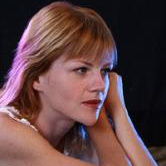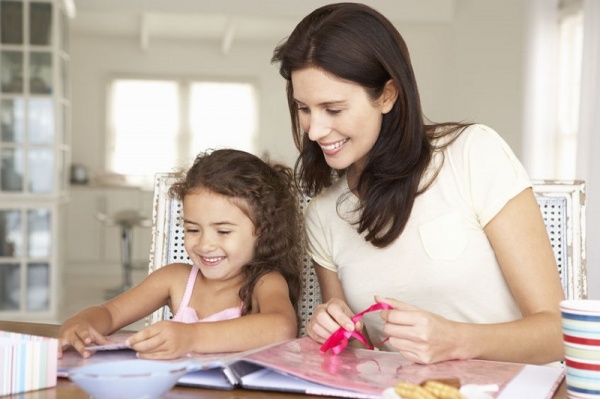Earth Day is great for planting and sowing, for upcycling and repurposing things instead of throwing them out, or for choosing from lots of DIY ideas to do something special with your kids. All this requires time and some supplies, though they may be easy to get or readily available, like things that have almost made it to the trash bin.
However, if you are short on time or supplies, no worries – you can always have fun with just paper and paints, and never mind if you cannot find a single paintbrush at the moment. Many art techniques do not require a paintbrush or a set of those. Let’s try some.
1. Sponge Blob
Sponge Blob is your fun companion. It can boast different shapes and sizes, thus resembling a variety of natural elements and textures. You can use a rectangular-shaped sponge, dipping its corners into paint for smaller-sized or even tiny dabs, or try using a round-shaped sponge for bigger ones and fuzzier effects.
In any case, you will probably appreciate it that a single sponge allows you to apply a few different colors quickly and easily, without having to wash anything or switch between several paintbrushes.
You can also make strokes with a sponge – straight, circular, wavy (flowing) or twisted – similar to those you would with a paintbrush, only they are likely to be more textured, and definitely easier for a child to make. Blending or layering colors is also fun with a sponge.
More: 7 Unique DIY Summer Ideas for Kids
2. Even a straw can draw
You can create really cool effects with regular drinking straws. Pour some paint diluted with water on a sheet of paper and use a drinking straw to blow air on it so that streaks of color run sideways. This is a crazy, fun and extremely creative technique – you do not even need to start with a certain idea, as the process itself will give you plenty.
The results may look like trees, flowers, fireworks, fantasy-realm landscapes and creatures. You can also add some details, such as glitter, buttons, stickers or the ‘moving eyes,’ to make your creations truly come alive.
Just keep it in mind that this can get quite messy, and streaks of paint often tend to travel further than the paper, so make sure you do not start experimenting close to sofas, carpets, curtains or other textiles.
Ideally, bring this kind of activity outside, or protect the floor with a plastic tablecloth. If you are having a picnic, a plastic tablecloth can serve both: food and art. You may prefer paper for art projects, but you can also pour paint right on the tablecloth after you are done with the food – for more fun or more people taking part in the fun. Just pack enough drink straws.
3. Hand shapes and finger painting
For the smaller ones, dipping their hands or fingers into paint and making bright-colored prints is the easiest and most enjoyable technique. These prints can look like flowers, grass, trees, fishes, birds or animals – especially if you or the older siblings add some distinctive details.
However, this colorful hands-on experience can also get quite messy. If you are looking for something different, or just less messy, consider tracing around these small hands on colored paper or fabric and cutting out hand shapes to make pictures with them. Just like hand prints, they can be used for resembling many natural things, including flowers and leaves, as well as for creating special memorable gifts and postcards.
More: A Green Box of Ideas for Earth Day
4. Paintless projects
When you have kids, the stuff for coloring may be all over the house – but that does not mean you (or your kids) can easily find something when deciding to use it. If you cannot find the paints that you know you have somewhere, don’t worry.
There are ways to make colorful art creations without paint – but you will need some glue. If you cannot find any glue, or suddenly discover that it has dried out, you can make your own one. This can double the fun as another Earth Day project, instead of being a problem – or it can actually be a fun experiment at any other time.
There are many recipes out there for homemade glue, most left over from the past when people had no choice but to make their own with natural ingredients. The ones that work best are flour or cornstarch, and you may find homemade glue a great solution if you are concerned about the toxic stuff the store-bought glues contain, or the wastefulness of these commercial products that often dry out and go to a landfill after being used only once.
Anyway, if you ever run out of glue in the middle of a project, you will know what to do to fix that quickly instead of running to the store. To make fun tree, flower or animal shapes appear on paper when you do not have paint, you can use scraps of colored paper or magazine pages, crayon or pencil shavings, pieces of yarn or fabric.
You can spend more time on tracing and carefully cutting out leaves, petals or other details, but abstract pieces of paper that are just torn or randomly cut are likely to work well, too. Just paste these fragments onto paper or cardboard with glue spread over it, or try the same with crayon or pencil shavings – for a slightly different project involving something that you usually throw out.
You can probably come up with a lot of other ideas like these ones if you start thinking of ways to waste less, have fun when you have run out or do not have enough of something. Please share them with others, as it is a rare case when we have a perfect combination of time and everything else that we need – or at least think we need – for a certain project. But that should not stop us from trying, creating something, experimenting and enjoying it, right?
Photos: Natalie Gontar





